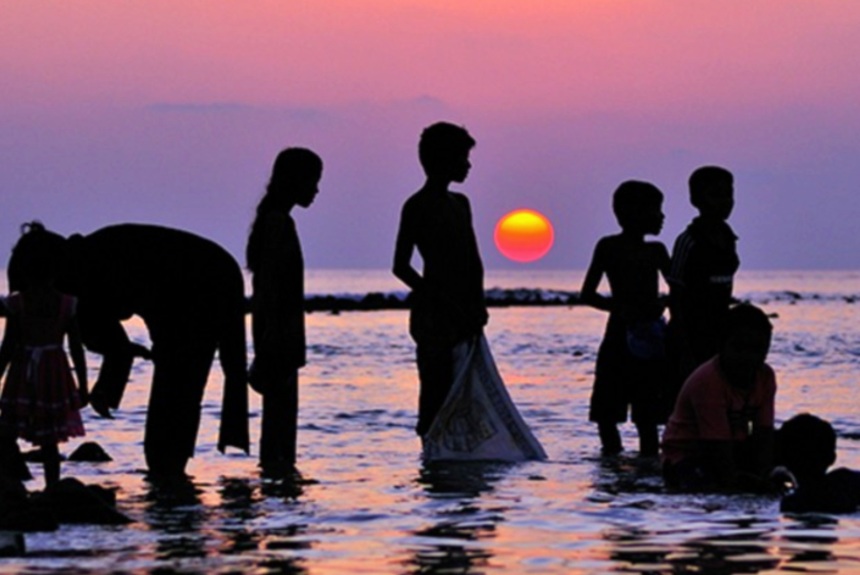Climigration is a new term coined because of climate change. A study defined this term as “a specific type of permanent population displacement that occurs when community relocation is required to protect residents from climate-induced biophysical changes that alter ecosystems, damage or destroy public infrastructure and repeatedly endanger human lives” (Matthews and Potts, 2018).
The Planning for Climigration (2018) article explains further:
- A planned movement or retreat from untenable locations and situations or permanently relocating entire communities or large sections.
- Forced migration in response to threats to lives and livelihoods related to climate change impacts.
- Assisted migration because it is planned and structured with assistance from the government and other agencies.
Once it occurs, it is doubtful that the original community will return to its prior location, and it only happens with climate change as the driving force (Planning for Climigration, 2018).
Three cases of climigration
The study reviewed previous migration cases due to natural, environmental, and highly harmful and life-threatening situations.
The first is relocation to Turkey, Iran, Guatemala, and Peru after the earthquakes. Looking closely at this incident, the study finds that:
- Relocations are more complex than initially recognized by disaster management agencies,
- it’s the last chance and undesirable adaptation approach,
- it will likely fail if relocated people resist external decisions made without their consent.
Another incident of planned relocation happened in Picher, Oklahoma, due to severe toxic groundwater contamination. The decision to relocate divided the community.
A pro-relocation group proposed a federal buyout, citing severe environmental and health problems as reasons for relocation. In contrast, the second group that was against it argued that the grounds were overstated and focused on losing cultural connection to the town.
The third incident happened in 3 communities in Alaska when the viability to live in their location was threatened by extreme weather events and climate-induced coastal erosion.
The report adds that the lack of overarching institutional frameworks caused problems such as legal issues around land acquisition, funding for new infrastructure, and choosing suitable cultural sites to move to.
Challenges of climigration
The above review of cases of migration due to natural, environmental, and other disasters mentions the challenges of climigration as a future resort due to climate change:
- There is a need for an institutional framework to relocate communities and even a whole country, for that matter.
- It needs to be coherent and flexible;
- guides effective coordination of community relocations;
- Capable of fast-tracking developments like demolition, temporary housing, transportation, and access to services for affected communities.
The Conversation news “Climigration: when communities must move because of climate change” states that because of increasing threats of climate change, “climigration is no longer a concern for the future; it is a challenge today.” It adds that relocating an entire community is no longer an imagination but a reality.
The news article cited that the United States, through the US Department of Housing and Urban Development, has earmarked US$1 billion to help communities adapt to climate change, and $48 million is allocated for the relocation of the community as a whole in Isle de Jean Charles, which is struggling with climate change impacts.
It explains that successfully planning for climigration involves a strategic land-use planning system, disaster management, social psychology, and engineering. The article narrates that strategic planning should begin as early as possible with risk mapping, starting with the most vulnerable communities.
Asia-Pacific Disaster Report 2019 shows the Asia-Pacific region is the most vulnerable to the impacts of climate change, such as rising sea levels, desertification and drought, water scarcity, and changing precipitation patterns. Those most affected live in poverty, delta, low-lying, and coastal regions.
In Vietnam, displacements occur daily as people living in the Mekong Delta are forced to leave their homes due to sea-level rise encroaching on them (BBC News, 2019).
The same is happening to people in Bangladesh living in the Ganges Delta, according to a report. The report added that they have been living with dangerous floods and tropical storms for decades, but with climate change, things are worsening.
Disruption of rain patterns, droughts, increased flooding and riverbank erosion make damage permanent. Because of these events, 700,000 Bangladeshis are displaced each year and flock to urban slums in Dhaka.
The city, already burdened with poverty, congestion, lack of secure infrastructures, and health hazards, is forced to accommodate massive migration by the day. (National Geographic, 2019).
Another example is people living in Oceania, particularly low-lying islands and developing states such as Fiji, Papua New Guinea, Tonga, Kiribati, Tuvalu, Samoa, and Palao. A report says that because of a lack of protective barriers, they are on the front lines of climate change (Stuff, 2019).
If resettlement is required for these highly vulnerable states, a study revealed that Australia and New Zealand are the two most preferred countries for relocation.
Because of the likelihood of climigration, the study recommends that low-lying and vulnerable counties adopt a relocation or climigration policy as part of their resilience building.
Based on the current events showing climate change impacts, climigration is a reality that resource and infrastructure-rich countries should begin to prepare for.
For countries like New Zealand and Australia identified as the preferred host countries for climigrants in the Pacific region, the question remains: Are these countries able and willing to accommodate climigrants in case such a phenomenon happens in the not-so-distant future?
Sources:
Matthews, T. and Potts, R. (2018) ‘Planning for climigration: A framework for effective action,’ Climatic Change. Retrieved from https://www.researchgate.net/profile/Tony_Matthews2/publication/324824689_Planning_for_climigration_a_framework_for_effective_action/links/5b8dd57fa6fdcc1ddd0a019c/Planning-for-climigration-a-framework-for-effective-action.pdf
Matthews, T. (2019, September 16). Climigration: when communities must move because of climate change [article]. Retrieved from https://theconversation.com/climigration-when-communities-must-move-because-of-climate-change-122529
Evans, O.L. (2019, September 30). The Displaced: Climate change in Vietnam’ destroying family life’ [news]. Retrieved from https://www.bbc.com/news/av/world-asia-49854753/the-displaced-climate-change-in-vietnam-destroying-family-life?ocid=socialflow_twitter
Havea, P.H., Hemstock, S.L., & Des Combes, H.J. (2019, August 13). Resettlement and Relocation Options for Coastal Communities [abstract] Retrieved from https://link.springer.com/referenceworkentry/10.1007%2F978-3-319-93336-8_50
McDonnell, T. (2019, January 24). Climate change creates a new migration crisis for Bangladesh [article]. Retrieved from https://www.nationalgeographic.com/environment/2019/01/climate-change-drives-migration-crisis-in-bangladesh-from-dhaka-sundabans/



Leave a Reply